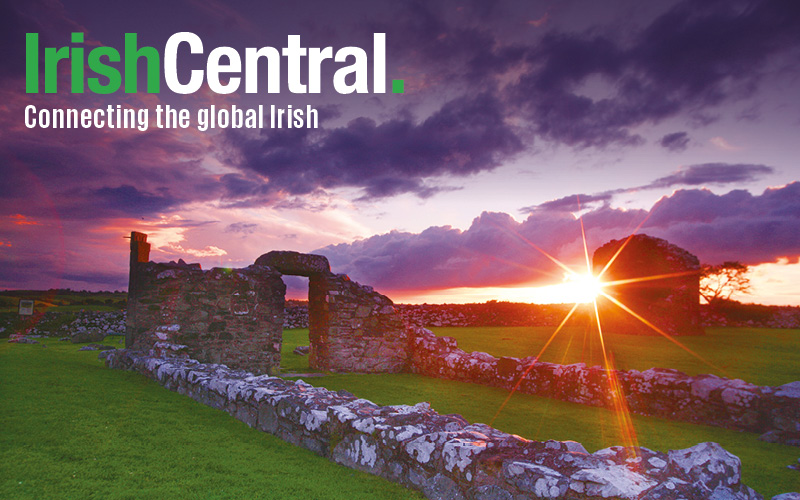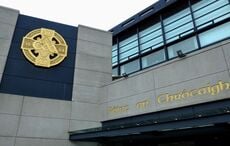It was the worst atrocity of the Troubles: three car bombs in Dublin, one in Monaghan on Friday, May 17, 1974 and it happened forty years ago this weekend. There were no warnings given.
Now the victims and families of those who died in the 1974 Dublin and Monaghan bombings are to sue the British government in Belfast.
They say the attacks were carried out by loyalists with government collusion and that there was a massive cover-up.
Irish Foreign Minister Eamon Gilmore has added his voice to the calls for justice.
“As we approach the 40th anniversary of the Dublin/Monaghan bombings, I renew the call on the British Government, our partner in the peace process and the joint guarantor of the Good Friday Agreement and its related agreements, to allow access on an agreed basis by an independent international judicial figure to the original documents in their possession relating to the bombings,” he said.
When the smoke cleared that fine Friday night thirty-three were killed and 300 injured. Among the dead were a pregnant mother and two little babies, Jacqueline Doyle, 17 months, and Anne Doyle, 5 months, along with their mother and father.
Paddy Doyle, their grandfather, remembers identifying their bodies at the morgue.
”It was like a slaughterhouse,” he remembered, “legs and arms everywhere.” Others remembered a headless body and victims melded together by the flames.
The Dublin bombs were timed to go off together on that busy Friday night in Dublin when a bus strike meant that far more people than usual were walking about the capital. Center city locations were chosen.
The cars had been hijacked or stolen in Belfast earlier that day and driven to a parking lot near Dublin Airport where the explosives were packed into the car.
The Monaghan bomb car was stolen in Portadown, Co Armagh – a hotbed of Loyalism. It went off killing seven. Its purpose was said to be to draw Irish police from the border to the town so that the bombers could escape back.
The bombing took place during the Ulster Workers' Council all out strike against the Sunningdale power sharing agreement which, for the first time, gave a role in Northern Ireland to the Irish government. The agreement collapsed soon after.
Right from the beginning it was known that a Loyalist gang from the notorious “murder triangle” around Portadown had organized the bombings. It was also known they had to have expert help as the sophistication of the bombing devices used was way beyond their skill set.
The men who did it were soon identified by the Irish police, but the RUC, the Northern police force refused to arrest them.
Suspicions that undercover British army operatives were involved was widespread from the beginning.
Several of the loyalists were known to be run by British Army undercover officers, the most famous of whom was Captain Robert Nairac later killed and disappeared by the IRA.
Nairac ran the bloodthirsty assassin known as The Jackal, AKA Robin Jackson, who killed somewhere between 50 and 100 Catholics during his reign of terror.
Then British Secretary of State Merlyn Rees later admitted that there was a secret unit of the British Army operating in the area completely outside the law and they were determined to make the British government back off from any thoughts of leaving Ireland.
The cover-up has continued to the present day. An Irish judicial inquiry into the killings was abandoned when the British government refused to hand over evidence.
Now the families are determined to take the case to court in Belfast seeking that and all other information.
Whether the truth will ever come out remains to be seen.
It was the worst atrocity of the Troubles: three car bombs in Dublin, one in Monaghan on Friday, May 17, 1974 and it happened forty years ago this weekend. There were no warnings given.
Now the victims and families of those who died in the 1974 Dublin and Monaghan bombings are to sue the British government in Belfast.
They say the attacks were carried out by loyalists with government collusion and that there was a massive cover-up.
Irish Foreign Minister Eamon Gilmore has added his voice to the calls for justice.
“As we approach the 40th anniversary of the Dublin/Monaghan bombings, I renew the call on the British Government, our partner in the peace process and the joint guarantor of the Good Friday Agreement and its related agreements, to allow access on an agreed basis by an independent international judicial figure to the original documents in their possession relating to the bombings,” he said.
When the smoke cleared that fine Friday night thirty-three were killed and 300 injured. Among the dead were a pregnant mother and two little babies, Jacqueline Doyle, 17 months, and Anne Doyle, 5 months, along with their mother and father.
Paddy Doyle, their grandfather, remembers identifying their bodies at the morgue.
”It was like a slaughterhouse,” he remembered, “legs and arms everywhere.” Others remembered a headless body and victims melded together by the flames.
The Dublin bombs were timed to go off together on that busy Friday night in Dublin when a bus strike meant that far more people than usual were walking about the capital. Center city locations were chosen.
The cars had been hijacked or stolen in Belfast earlier that day and driven to a parking lot near Dublin Airport where the explosives were packed into the car.
The Monaghan bomb car was stolen in Portadown, Co Armagh – a hotbed of Loyalism. It went off killing seven. Its purpose was said to be to draw Irish police from the border to the town so that the bombers could escape back.
The bombing took place during the Ulster Workers' Council all out strike against the Sunningdale power sharing agreement which, for the first time, gave a role in Northern Ireland to the Irish government. The agreement collapsed soon after.
Right from the beginning it was known that a Loyalist gang from the notorious “murder triangle” around Portadown had organized the bombings. It was also known they had to have expert help as the sophistication of the bombing devices used was way beyond their skill set.
The men who did it were soon identified by the Irish police, but the RUC, the Northern police force refused to arrest them.
Suspicions that undercover British army operatives were involved was widespread from the beginning.
Several of the loyalists were known to be run by British Army undercover officers, the most famous of whom was Captain Robert Nairac later killed and disappeared by the IRA.
Nairac ran the bloodthirsty assassin known as The Jackal, AKA Robin Jackson, who killed somewhere between 50 and 100 Catholics during his reign of terror.
Then British Secretary of State Merlyn Rees later admitted that there was a secret unit of the British Army operating in the area completely outside the law and they were determined to make the British government back off from any thoughts of leaving Ireland.
The cover-up has continued to the present day. An Irish judicial inquiry into the killings was abandoned when the British government refused to hand over evidence.
Now the families are determined to take the case to court in Belfast seeking that and all other information.
Whether the truth will ever come out remains to be seen.




Comments